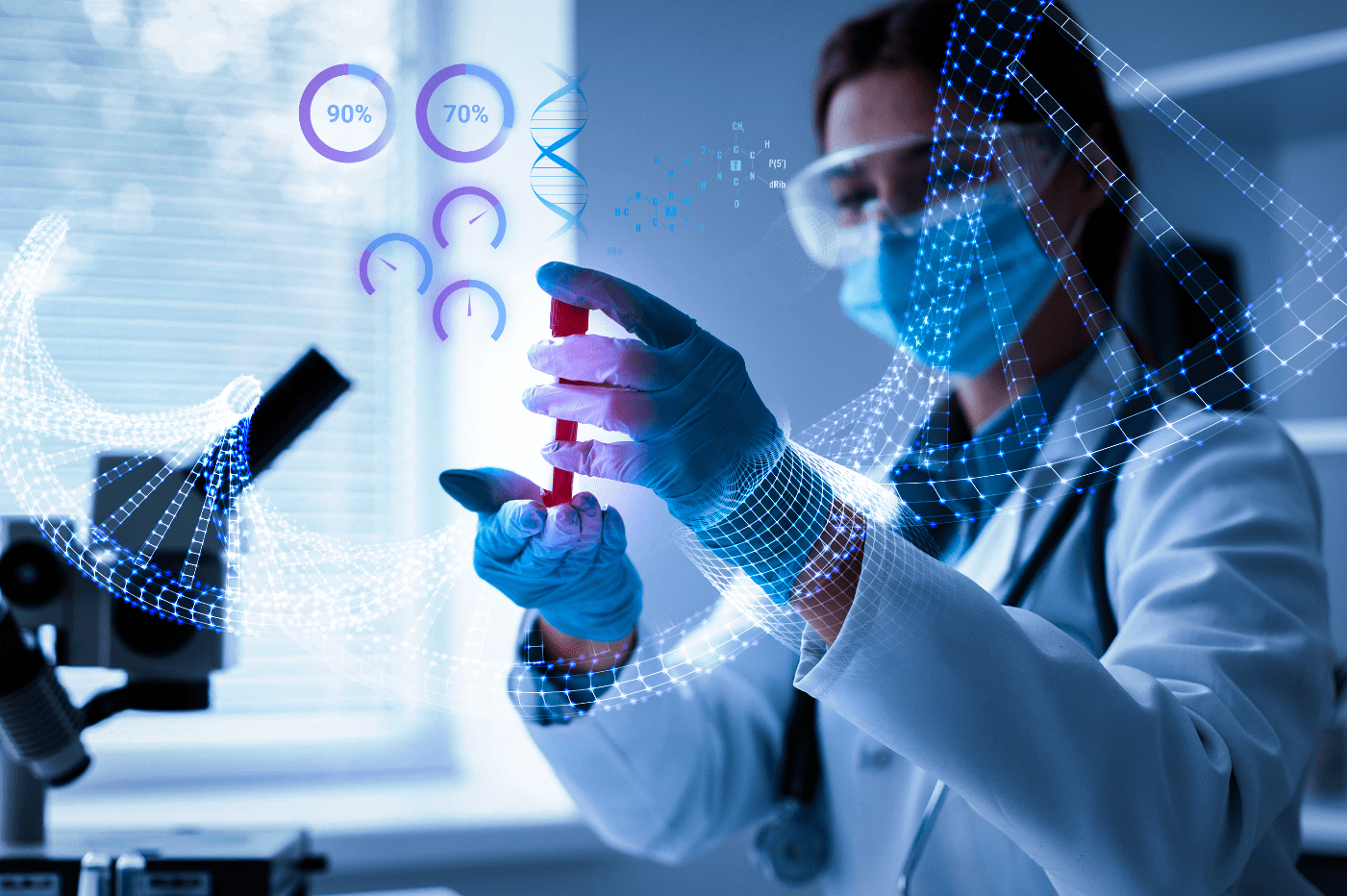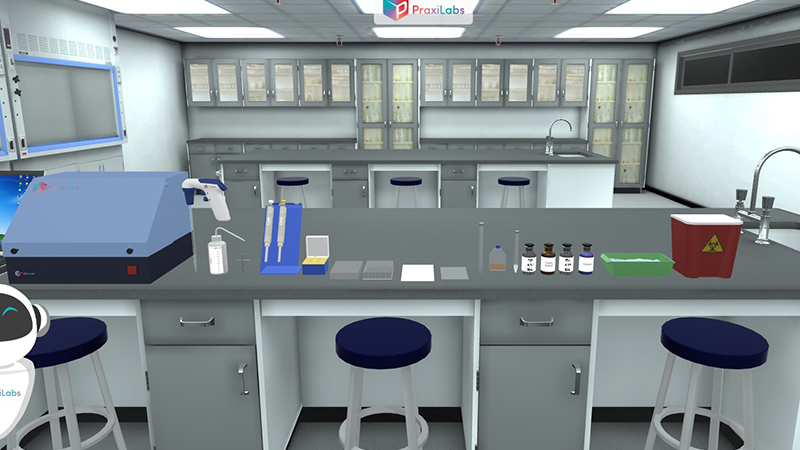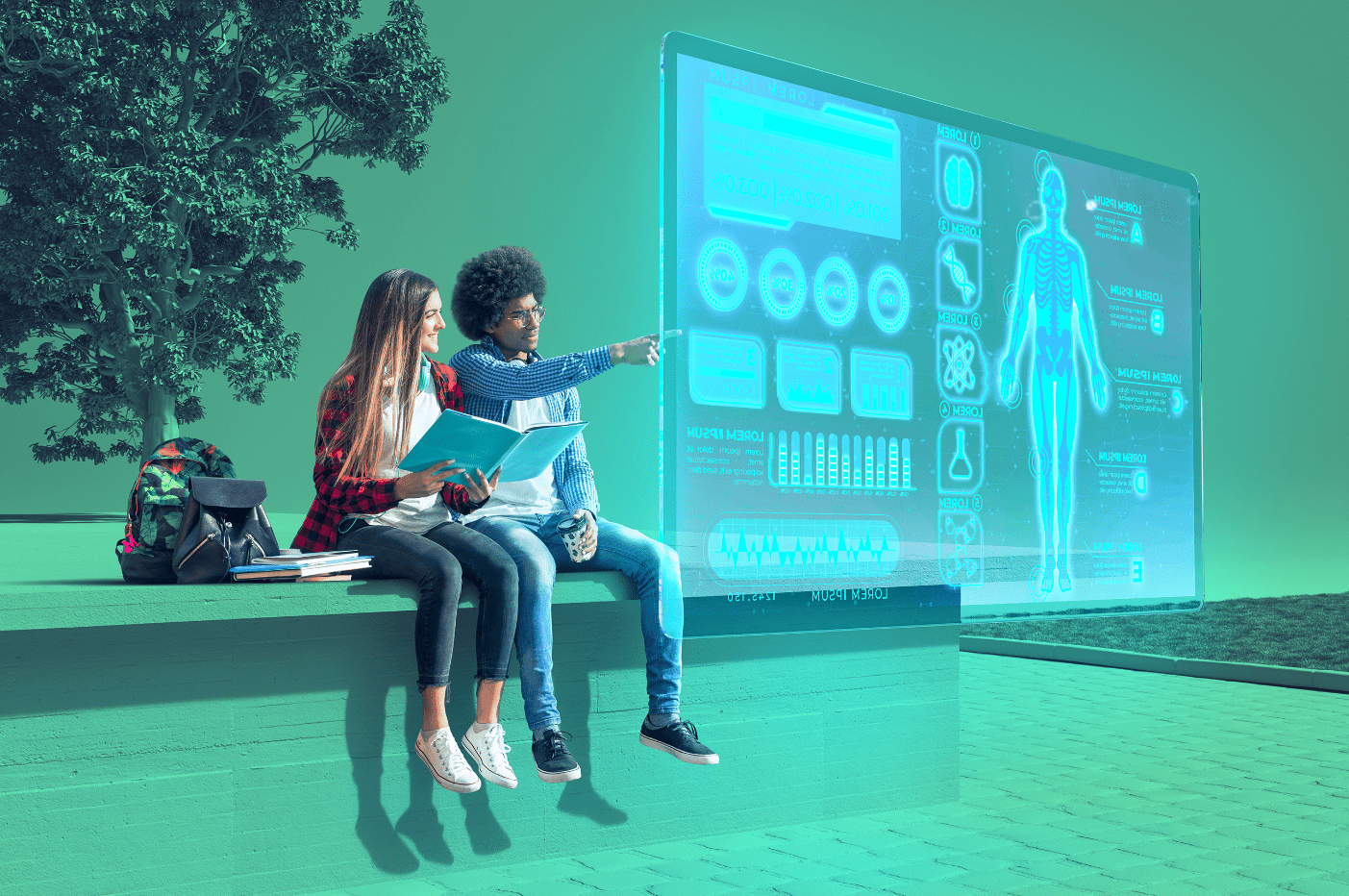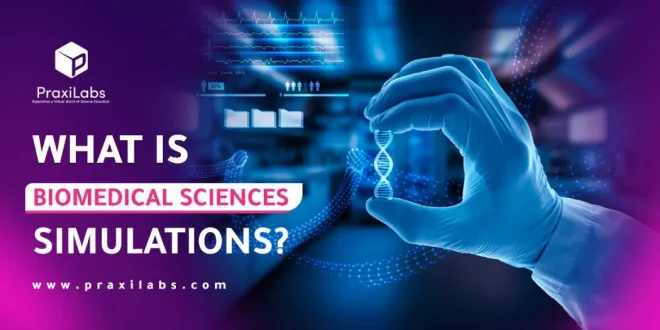Last Updated on August 22, 2025 by Muhamed Elmesery
Biomedical Sciences Simulations are virtual simulations that are used to learn and understand several topics in physiology, human anatomy, pathology, and more in a 3D interactive environment. They also help enhance students’ chemistry and biology skills that are relevant to healthcare.
In this blog, we will explore what are biomedical sciences simulations and how these simulations enhance the students’ experience and learning outcomes, especially in biomedical sciences.

Table of Contents
Step into the Lab: Virtual Biomedical Sciences Simulations Enhance Student Experiences
What are Biomedical Sciences Simulations?
Virtual biomedical sciences simulations enhance student experiences by providing a 3D immersive and flexible environment for more engagement and understanding of complex concepts. These simulations enable students to safely and easily conduct their biomedical simulations anytime, anywhere and an unlimited number of times.
Simulations for Exploring Complex Concepts
Virtual biomedical sciences simulations, offered by PraxiLabs Virtual Labs, provide several accessible lab simulations to support biomedical courses and online biomedical lectures, involving several disciplines such as molecular biology, immunology, biochemistry, microbiology, toxicology, pharmacology, cell culture, and more.
So, by using these biomedical simulations, students can explore basic and complex concepts in biology and chemistry that empower them to enhance their knowledge and skills in biomedical science.
Biomedical science simulations from PraxiLabs are designed to make virtual science labs accessible, usable, and affordable for universities, schools or any educational institutions. PraxiLabs not only offers an immersive and interactive virtual lab experience, but also provides enriched content, offering students a deeper understanding and knowledge base for exploring complex concepts in simulations.
Praxilabs provide variety of 3D science experiments to enhance science learning.
Pick the Best Virtual Plan For You

Learn Biomedical Sciences with PraxiLabs Virtual Labs Simulations
Biomedical Sciences involve all science branches that focus on the biology of human health and disease. It ranges from the generic study of biomedical sciences and human biology to more specialized subject areas.
Biomedical Sciences are underpinned by relevant basic sciences including cell biology, biochemistry, microbiology, Genetic Engineering , molecular biology, pharmacology, immunology, and anatomy and physiology.
Let’s take some examples of PraxiLabs’ virtual lab simulations:
Adherent Cell Culturing using Mammalian Cell Lines
This experiment shows adherent cell culture, propagated, sub-cultured, and frozen in liquid nitrogen for long-term storage. Cell culturing is a very critical protocol for preparing cells needed for all subsequent in assays such as in vitro cytotoxicity and genotoxicity.
Production of Monoclonal Antibodies
This simulation aims to teach students the production of monoclonal antibodies for one type derived from a single cloned B cell.
Antibiotic Sensitivity Test Disc Diffusion Method
This antibiotic sensitivity test determines the susceptibility of a microbial species against different antibiotic agents.
Bacterial Plating Out Technique Experiment (streak plate method)
The plating-out technique experiment demonstrates the process of isolating bacteria into a pure culture from a mixed population .
Elisa
This elisa test is used to detect and measure the concentration of an analyte (usually antibodies, antigens, hormones, proteins or peptides) in solutions.
In Vitro Cell Viability by the Lactate Dehydrogenase Assay (LDH)
This experiment aims to determine the activity of the cytoplasmic enzyme lactate dehydrogenase (LDH) released by damaged cells after exposure to the geometric concentration of different nanoparticles.
Annexin V Assay
This experiment aims at detecting and quantifying apoptotic and necrotic cells through Annexin-V binding and Propidium Iodide (PI) uptake using a fluorescent microscope.
In-Vitro Chromosomal Aberrations Test
This simulation aims at detecting structural chromosomal aberrations by estimating different classes of chromosome changes scored in metaphase using the light microscope.
Conventional PCR
This experiment is used to amplify DNA fragments using the Polymerase Chain Reaction (conventional PCR) technique.
Western Blot
This experiment is used to understand how to detect a specific protein in a sample using the western blot technique.
In Vitro 8-Hydroxydeoxy Guanosine (8-OHdG) Assay
This test aims at visualizing the response of protein recruitment to DNA damage sites. DNA double-strand breaks (DSBs) induce the hydroxylation of 2’-deoxyGuanosine to form 8-Hydroxy, 2’-deoxy Guanosine (8-OHdG), and accumulate 8-OHdG which can then be detected as foci.
The detection of 8-OHdG foci by immunostaining with antibodies that recognize 8-OHdG is an indicator of DSBs presence. This assay is also used to describe the measurement of 8-OHdG immunostaining using a fluorescent microscope.
For more biomedical science simulations, Download our portfolio of virtual biology lab simulations, including biomedical simulations. Access our vast and exceptionally diverse collection of in-demand lab experiments to enhance your students’ learning experience in online biology lab experiments.

Bridging the Gap with Biomedical Sciences Simulations
Biomedical science simulations play a vital role in keeping all students engaged and enhancing their learning outcomes. They can also be utilized to bridge the gap between lab and lecture courses, as they are used for pre-lab preparation, biomedical courses, online biomedical lectures, or in conjunction with textbooks.
Students benefit from realistic learning experiences through virtual biology lab, as highlighted by Crys Wright, Teaching Assistant from Texas A&M University, USA.

She said ” PraxiLabs offered my students a chance to actively engage with the material. Instead of watching videos on a topic, they could virtually complete labs and realize the practical applications of class topics. This is a quality alternative to in-person labs”.
Virtual Labs Improve Students’ Outcomes
- 60% increase in students’ performance.
- 80% increase in students’ retention.

Motivation and Skill Development
Immersive and interactive virtual lab simulations have been shown to enhance student motivation in biomedical science education. By engaging students with creative digital tools, these simulations help empower students to develop essential knowledge and skills in biomedical science. These tools also help build scientific skills in higher education, as well as in-demand, transportable skills like problem-solving, critical and creative thinking, communication, and collaboration.
In conclusion, virtual biomedical sciences simulations offer a flexible, interactive, and immersive learning environment that enhances student experiences, fosters motivation, and facilitates the development of essential skills in biomedical science education. These simulations play a crucial role in preparing students for future careers and empowering them to thrive in an evolving world of biomedical sciences.
Now is your educational institution’s moment to power up your students’ inner scientists and open up a world of possibilities!
 PraxiLabs A virtual world of science
PraxiLabs A virtual world of science






